Search Results
Fine Jewelry University Articles matching: “14k star”
Showing only FJU Article results. Click here to show all results.
Fine Jewelry University (Show All FJU Articles)
-
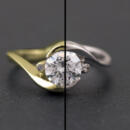
Star White Gold
…Just Brilliantly White Gold We have found a gold alloy that is extremely white and looks great without any plating. Star White Gold is bright and white without any plating. You see what you get. No guess work. No taking anyone’s word … white it truly is. Star White gold has a bright shinny hard finish that will keep its look. Our manufacturer of the Star White alloy has tested it and states: “Star white gold has been developed with the consumer in mind since some …
-
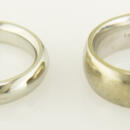
The Difference Between White Gold and Platinum
… basic and is the foundation of all the other differences. White gold and platinum are different metals. White gold starts out as gold. Gold is yellow. Platinum is itself a white metal. White gold and platinum have their own properties …. Some manufacturers state what alloy they are using like 90% Platinum 10% Iridium. How white gold and platinum start out is one of the key differences. White gold even in the best mixture has a hint of yellow. Platinum is a gray white …
-
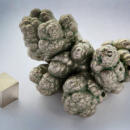
What to Do When Your Ring Irritates Your Skin
… of the Platinum family. People are unlikely to be allergic to Rhodium, but as the plating wears off, irritation can start due to the fact that the skin is now in direct contact with the Nickel (or other metal) that they are allergic to. … cause of the reaction. The key is to try to determine what is causing the reaction. If, for example, the irritation started after the ring was sized or worked on, maybe you are allergic to the solder. Our shop has a laser welder which …
-
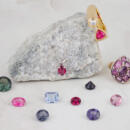
Gem in the Spotlight: Spinel
…with other gems and even today is often used as a substitute for similar looking stones. In recent years, spinel has started to move out of the shadows and be appreciated in its own right, and we can see why. Its colors rival even the … as the August birthstone! This change was officially made in 2016, but only in the last couple of years have we started to see the majority of the industry get on board. If you know someone born in August, it’s time to get excited. …
-
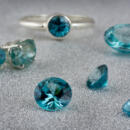
Gem in the Spotlight: Blue Zircon
… colorless, pale gray, or pale yellow variety of Zircon. Matura Diamond is another trade name for colorless Zircon. Starlite is the name for the blue gem variety of Zircon. The color of Starlite is rarely natural, and is almost always … the 1880s. Tiffany’s famous gemologist George Kunz was a distinguished zircon advocate. He proposed the name “starlite” to promote the gem’s fiery nature. Unfortunately, the name never caught on, and today we use the simpler term, Blue …
-
The Birthstones
January’s Birthstone: Garnet January babies born in the midst of cold, white (valley fog) and at times stark surroundings are rewarded with one of the most varying birth gemstones, Garnet. Garnet’s pizzazz energizes the gloomiest day. Garnet varieties brighten the world in colors of yellow to gold, bright orange to true orange, brown to …
-
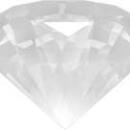
Fake Diamonds: The Great Diamond Attack
… and diamond lookalikes. “What is a real diamond?” is a difficult question these days. And the problem of separating a fully natural diamond from all the modern possibilities is quite demanding. So what is a real diamond? Let’s start with the older diamond look a likes, (CZ, GGG, YAG, Synthetic corundum and spinal, Glass) or simulants are quite easy to separate. The diamond tester and understanding gem properties make choosing the diamond an easy task with these older …
-
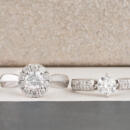
Anatomy of a Ring
… ring has a shank. This is the technical term for the band of metal that encircles the finger. There would be no ring without the shank. If the ring has a distinct design feature on the top part, the ring shank is generally said to start at the point that the design stops. A jeweler will usually add or remove metal from the bottom of the shank when sizing a ring. This can sometimes be done so well that you would never know it was sized looking at the shank with your …
-
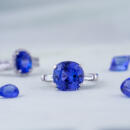
Gem in the Spotlight: Tanzanite
…showed the stones to. Manuel had originally thought he found sapphires, but after discovering they were too soft, he started searching for answers as to what these gems could have been. They went to MIT geologists who discovered the gems …, the VP of Tiffany & Co. at the time, who named the stone tanzanite after the country of origin. Tiffany then started marketing the stone around 1968. The geological conditions required to form tanzanite are quite rare, leading some …